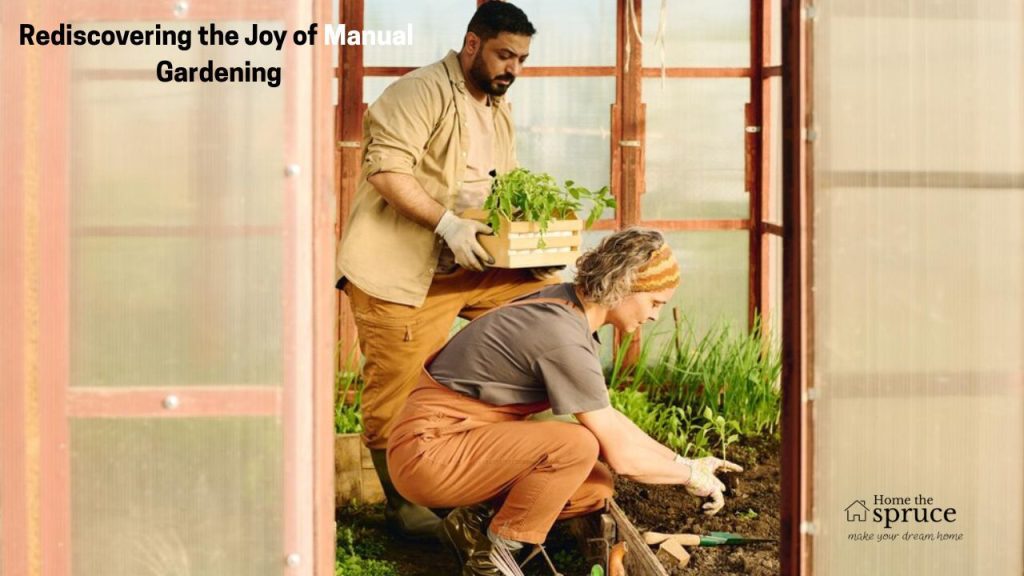In a world filled with power tools and automated systems, there’s something timeless and grounding about using hand tools in the garden. Whether you’re tending to a small backyard bed or maintaining a more expansive homestead plot, manual gardening practices continue to offer benefits that machines often can’t replicate — from better soil connection to greater physical and mental wellness.

A Slower, More Mindful Approach to the Outdoors
The rhythm of gardening by hand invites a slower pace. Pulling weeds, aerating the soil, and pruning with hand tools all require a level of attention and care that creates a deeper bond with your plants. This slower approach not only improves garden results but also provides a meditative experience.
Building a Healthier Soil Ecosystem
Unlike motorized tillers that can disrupt soil layers, hand tools allow you to maintain the delicate structure of your soil. This encourages the development of beneficial microorganisms, earthworms, and fungal networks that contribute to healthier, more productive plants over time.
Essential Hand Tools for Everyday Gardeners
While you don’t need an arsenal of tools, having a few high-quality essentials can make all the difference in your gardening experience.
Choosing Tools That Last a Lifetime
Investing in durable tools made from strong metals and hardwood handles is key. Many seasoned gardeners prefer tools that have stood the test of time over decades, rather than trendy, mass-produced versions. A well-maintained tool with a sharp edge and solid grip is often more effective than a fancy new gadget.
Hand Forks and Hoes: Underrated Workhorses
Hand forks and small hoes are incredibly versatile. They loosen soil, uproot weeds, and create perfect conditions for transplanting young seedlings. Because of their size, they give you precision in tight garden rows or around established plants.
Ergonomic Options for Less Strain
For gardeners with arthritis or limited mobility, ergonomic tools can offer a gentler experience. Curved handles, lightweight materials, and specific tool designs can reduce wrist and back strain, making gardening more accessible to all ages.
Cultivating with Intention: Planning and Preparing Beds
Before you even lift a tool, setting intentions for your garden bed is crucial. A thoughtful layout and understanding of your plant’s needs can save you hours of work throughout the season.
Raised Beds or Ground Plots?
Each option has its perks. Raised beds warm up faster in spring and allow for better drainage, while traditional ground plots provide more space and flexibility. Your choice depends on your goals, soil conditions, and how much bending you’re comfortable doing.
Mulching Strategies for Weed Control
Mulch is a gardener’s best friend. Straw, bark, leaves, and compost can all be used to suppress weeds, retain moisture, and improve soil quality. In tandem with careful cultivation using tools like a long handled hand cultivator, you can significantly reduce the time spent pulling invasive plants by hand.
Companion Planting and Crop Rotation
When you plan your garden layout, keep in mind how certain plants support each other. Basil helps tomatoes grow stronger, while marigolds deter pests. Rotating crops each season can also prevent soil depletion and break pest cycles.
The Return of Hand Tools in Sustainable Gardening
As awareness of climate change and environmental impact grows, more gardeners are turning to traditional methods that align with sustainable practices. Hand tools are a natural fit in this evolving movement.
Reducing Reliance on Fossil Fuels
Using manual tools eliminates the emissions and fuel dependency associated with gas-powered equipment. For eco-conscious gardeners, this can be a major motivator. Quiet, clean tools also make for a more pleasant gardening experience.
Supporting Local Tool Makers and Craftspeople
There’s been a rise in interest in handcrafted tools made by local blacksmiths or small-scale manufacturers. These tools often come with stories, traditions, and craftsmanship that connect gardeners with a broader cultural legacy.
Passing Down Tools and Traditions
Gardening isn’t just about growing plants — it’s also about nurturing relationships. Heirloom tools and the skills that go with them are often passed from generation to generation. Teaching children or grandchildren to care for the soil with the same tools their elders used builds a legacy of stewardship and love for the land.
Final Thoughts: Getting Back to the Roots
In many ways, choosing to garden with hand tools is about getting back to the roots — of both plants and people. It’s about feeling the soil between your fingers, noticing the subtle cues from your crops, and enjoying the rhythm of a season’s labor.
Whether you’re a weekend hobbyist or a dedicated homesteader, integrating well-made manual tools into your gardening practice can enrich both your harvest and your experience. For those interested in an ergonomic, efficient solution to weeding and soil cultivation, the long handled hand cultivator from CobraHead is worth considering — offering reach, comfort, and the kind of durability that lasts through countless growing seasons.












